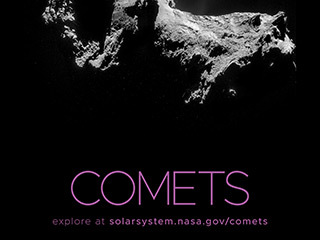Winners
Alexia de Costa
Grade 5-6

Contest:
2016-2017
Topic:
Saturn's Hexagon
School:
Queen of Apostles School, Alexandria, VA
Teacher:
Mrs. de Siles
"I chose Target 3 because I believe that studying Saturn's Hexagon would be a thrilling endeavor. It is a mystery that needs to be solved. Why Saturn? Because of the amazing atmospheric structure of this gas giant. Specifically, the planet's 20,000 mile wide strange hexagon-shaped storm - the width of two Earths - rotates at almost exactly the same rate as Saturn spins on its axis. At the north pole, the storm extends at least 46 miles below the giant planet's visible cloud top with winds raging close to 200 mph. The largest recorded wind system is 2,200 miles wide, twice the size of the largest hurricane recorded on Earth.
Hurricanes on Earth usually last for about a week, but the hurricane on Saturn has been in existence for probably decades or even centuries. What is even more intriguing is at its center is a polar cyclone.
So why has the storm taken the shape of a hexagon? Is it being shaped by stronger wind forces within and closer to the center of the storm? Is there conclusive evidence of winds beneath the jet stream, similar to our own arctic jet stream, going eastward around the pole at cloud level and being forced into a shape by other winds at lower levels? Could the geometric shape therefore be the result of the winds beneath the jet stream jostling and directing the air current into the observed hexagonal shape?
One also wonders why such a distinctly shaped storm developed in the north pole but not in the opposite south pole. Are the conditions at the south pole not favorable to support the formation of a similar geometric shape there? Well, it appears that the south pole has an interesting atmospheric feature too but not as mysterious as the distinct one in the north pole. The south pole has a polar vortex with a dark "eye". The size of the "eye" is about two thirds the diameter of the Earth.
We do not know how long Saturn's Hexagon storm in the north pole will last but by studying the movement of the hexagon and any patterns of change, it's possible that we can learn more and perhaps have a better understanding about the exact influence of the winds hidden under the stormy clouds in the upper atmosphere. This continued observation will certainly give us a better idea of the forces that shape this intriguing and one-of-a-kind geometric structure in outer space.
2017 will be Cassini's final year of exploration and what better way to end its journey of discovery than with a fiery plunge into Saturn. Target 3 is perfect for further scientific study because of the timing of the event and the impending potential to discover exponentially more about the true nature of the forces at work in this uniquely shaped storm. Clearly something exceptional is going on here and there are many intriguing questions that need to be answered related and relative to Saturn's turbulent north."
